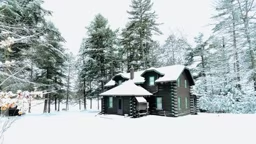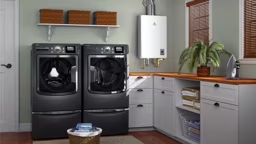
Many homes, like this saltbox-style house in New England, are built to handle the conditions present in their particular climate. By building for your location, you can increase energy efficiency without the extra cost. Photo: R. Hood & Co.
“Green by intelligent programming will be more efficient and save you a lot more money than green by gadgets,” says Peter Pfeiffer, SAIA, founding principal at Barley & Pfeiffer Architects in Austin, Texas. Programming, he explains, “means, ‘Let’s sit down and hear what you want, but let’s discuss the ramifications.’”
Ramifications may mean incorporating unnecessary square footage, which in turn wastes building materials and squanders energy use by heating and cooling the excess space, he adds. The key is to think about what you really need and lay the home out accordingly. To start, consider how the following five factors will influence your home’s design.
Location
Certain homes have become associated with various regions over time, such as the saltbox homes of New England, Pfeiffer says, and with good reason: Many of these homes were built specifically to handle the conditions present in that particular climate. “Most people don’t realize the difference in the way homes should be built based on location,” he adds. This climate-specific home design — be it window shading from a hot southern sun or a steep roof for snow runoff — provides a solid base for today’s energy-efficient focus without costing extra. To achieve the right design for your location, he suggests hiring an architect who is familiar with climate-specific design or asking critical questions during the design phase to ensure an environmentally suitable home. Orientation
Sure, you want your home to capture the best views. But proper orientation to take advantage of the sun for passive-solar capabilities is also a must for any energy-efficient home. A few good rules of thumb: “Avoid west-facing slopes in southern climates, because your afternoon sun is really going to heat your house,” Pfeiffer notes. Northern clime dwellers, on the other hand, should be conscious of the direction of harsh winter winds, he adds, perhaps necessitating a south-facing slope. Haven’t bought your property yet? Consider what type of orientation your potential parcel will afford you before making your purchase.

A smaller home is a more eco-friendly home. Less square footage means less disturbance to the surrounding environment and less material consumption.
Footprint
Decreased square footage is definitely a factor in disturbing less of the surrounding environment and consuming fewer materials, thereby creating a more eco-friendly structure. However, you can regain some of that square footage by building upward instead of out. Two-story homes not only affect less land and use less energy to build, they’re also typically less expensive to build because no additional foundation is needed.
Creative planning can best utilize cost-saving heating and cooling techniques that two-story homes offer. Such plans provide a narrower footprint than one-level homes, allowing more sunlight to infiltrate a greater number of areas in the home. Zone heating also may be more realistic by grouping together frequently used spaces in one area rather than across the home. Another option: placing less-used spaces, which require less heating and cooling, on the northern side of the home to capture more solar benefits in frequent hot spots on the southern end.
Envelope & Air Quality
Many have become caught up in the importance of R-value in creating a well-insulated home. More important than super-thick walls, however, are super-tight walls, windows and doors. “If you are going to be air conditioning or heating the home, you need a tight envelope,” Pfeiffer states. Being able to maintain high-quality air within your home also requires a tight envelope. “You can’t condition air in the house until you can fully contain the air,” Pfeiffer states. However, with a tight envelope comes the concern of stale air and the need for mechanical assistance via high-tech appliances such as fresh-air exchange devices. Before rushing out to install such a system, though, take the time to think about what you are putting in your home — e.g., your flooring, cabinetry, sealants or paints, etc. — to ensure you’re starting with a clean slate.
Minimizing the pollutants introduced by using low volatile organic compound (VOC)-emitting and formaldehyde-free materials, or allowing such pieces to air out in a garage or outdoors prior to installation to help prevent pollutants from entering the home, may eliminate the need for such appliances altogether, he notes. Once these fundamental concepts are in place, then you can start to explore additional alternative energy solutions, such as tankless water heaters or solar panels. But if you master the basics, you’re sure to have an efficient home designed to save energy — and operating costs — that may eliminate the need for high-tech energy-saving solutions.






_11868_2023-04-27_10-18-256x288.avif)




